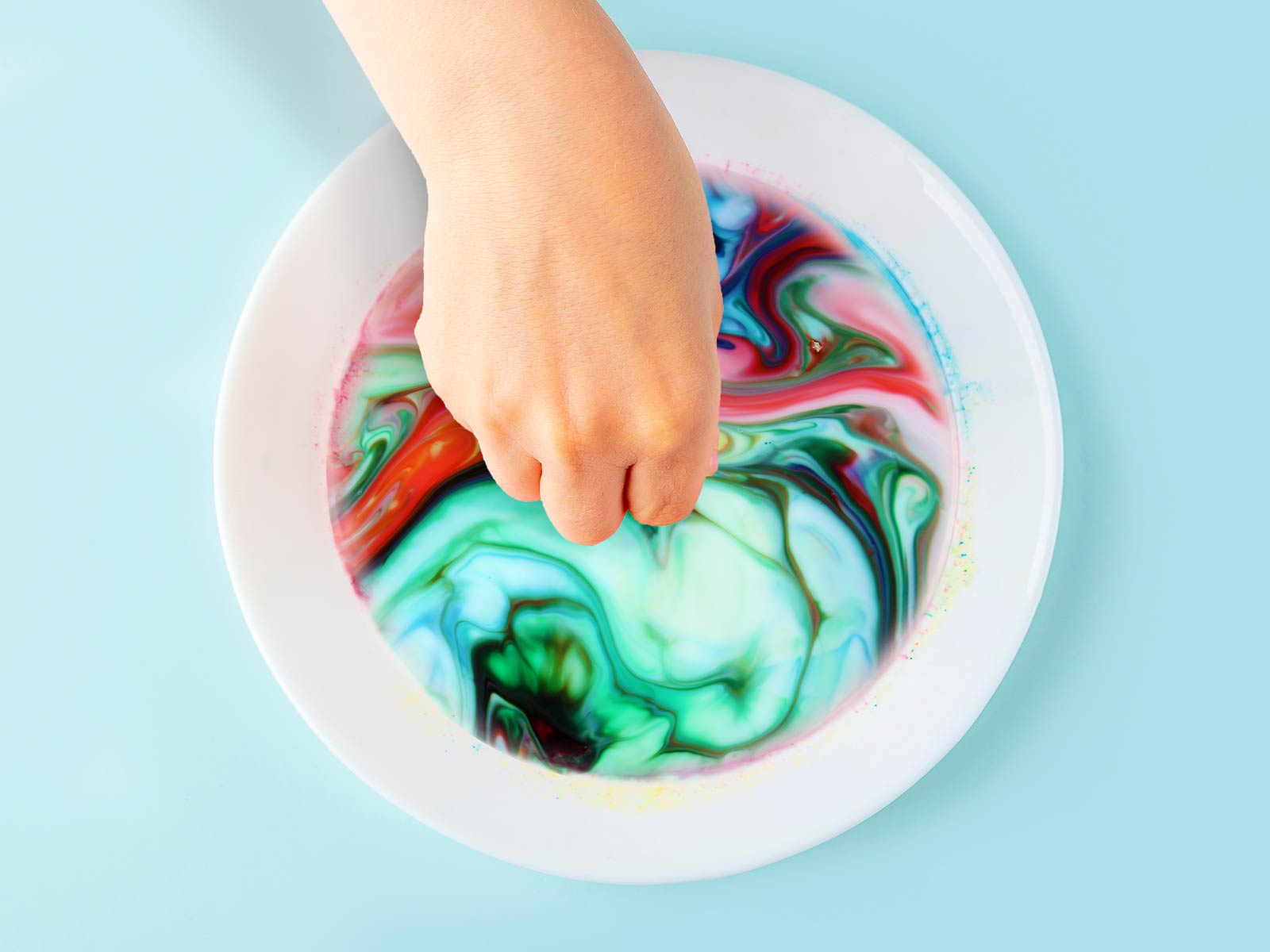
Have you ever seen milk fireworks? They’re a fun and easy science experiment that kids of all ages can enjoy. All you need is some milk, food coloring, and dish soap.
What You’ll Need:
- Milk (preferably whole milk, at room temperature)
- Liquid food coloring
- Shallow bowl
- Toothpicks and/or Q-tips
- Dish soap
- Adult supervision
What To Do:
- If your milk is still cold from the refrigerator, pour some into a small bowl and allow it to warm to room temperature. About 1” deep is enough.
- Place the bowl on a sturdy table so that you won’t bump or shake it as you work.
- Very gently place one tiny drop of food coloring near the center of the bowl. The color should remain just where you placed it, without spreading out, like a tiny colored island. If you have more colors, you can place another drop of each color near the first, but don’t allow them to mix. Don’t bump or shake the bowl!
- Dip a toothpick or Q-tip into dish soap (you may want to pour a little soap into a small cup first).
- Without bumping your bowl of milk, carefully touch the soapy end of the toothpick or Q-tip to the surface of the milk in the center of the bowl (touch the milk, not the food colors). Do not stir the milk, just gently touch the surface with your soap.
- Now wait and watch what happens! It may take a few minutes to begin, so be patient. Do not stir or shake the milk.
Observation:
If everything works, you should see the food coloring begin moving around, leaving colored streaks and swirls on the milk surface. You may also see bursts of color suddenly appear from an otherwise plain white surface, just like fireworks erupting. If nothing happens after several seconds, try touching another drop of soap to the milk surface, perhaps in a different spot. Sometimes nothing may seem to be happening for a minute or more, but colors are moving around below the surface and will suddenly burst into view.
The Science Behind the Experiment:
Milk is an amazing substance, made up of fats (molecules called fatty acids), sugars, proteins, vitamins and some other chemicals, but mostly water molecules. This type of mixture is called an emulsion or suspension, because the liquids and solids are not truly dissolved. The fatty acid molecules have both a hydrophilic (water-loving) end and a hydrophobic (water-repelling) end, which causes these long molecules to twist around and group together into more stable arrangements. This is what makes it possible for them to stay suspended in the water. The fatty acids form globules, sort of like little water balloons, with their hydrophobic ends on the inside and their hydrophilic ends on the outside facing the water molecules. These molecules ware willing to stay put as long as they aren’t upset too much. When you gently add the food coloring (which are dissolved in water) they are also happy to stay put in their own tiny puddles.
By introducing molecules of dish detergent, which also have both hydrophilic and hydrophobic parts, we disrupt the existing state of equilibrium. The soap molecules grab and pull on the fat globules. All of the various molecules begin to move about, dragging the food colors with them as they try to return to some equilibrium. Because milk is all white, we wouldn’t normally be able to see what’s happening, but because the food coloring is sort of caught in the middle, we can observe all the action taking place.
The fats in milk are largely responsible for the action in this experiment, so milks with more or less fat may behave differently. Temperature also affects reactions.
